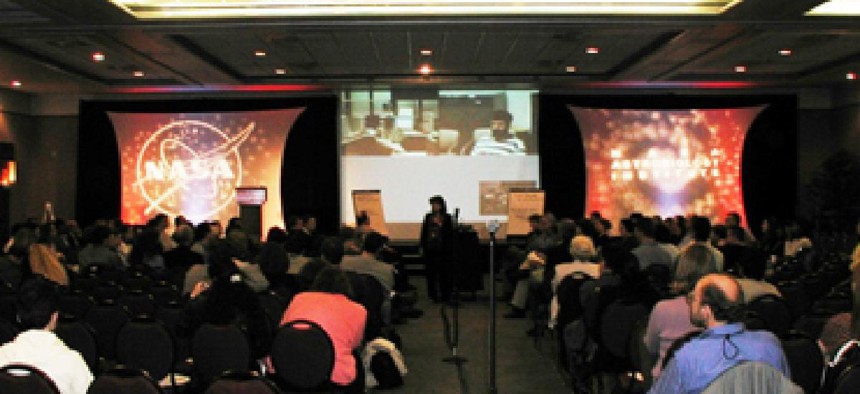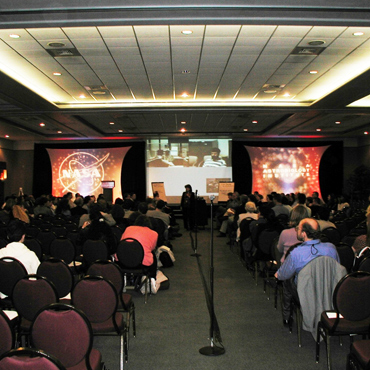Cutting costs with virtual conferencing

The space agency has years of experience in taking the travel out of meetings and events.

NASA technology can involve rockets and satellites, but the agency uses IT to innovate at all levels. Long before the sequester and tightened budgets, for example, NASA had turned to videoconferencing to cut costs.
NASA hosted its first Virtual Executive Summit in October 2012 as a series of prerecorded and live sessions, activities and interactions hosted through NASA's human resources portal and Adobe Connect. Nearly 500 NASA leaders participated in the virtual events.
According to officials, the agency saved $750,000 in travel expenses and another $250,000 in logistics and venue costs -- for a total of more than $1 million in savings.
The summit, which took place throughout the month of October, proved that communications, collaboration and learning could be delivered in a distributed virtual environment, said Erica Bovaird, NASA's chief learning officer.
Last year, the agency announced plans to reduce travel expenses by more than $20 million by using Web and videoconferencing solutions.
Virtual technology also allows agencies to host more events. NASA was able to do six times as many events in 2013 as it did in 2011. Estelle Dodson, integrative sciences and technologies manager at NASA's Astrobiology Institute, said that given current travel restrictions, cultural changes and improvements in technology, virtual conferencing is a great option for agencies.
"There's been a real change in people's receptiveness to videoconferencing," she said. "Also, improvements in videoconferencing ability itself, the reliability, the quality, all these things increased at the same time that the generation was entering the workforce about five years ago that had really spent a lot of their life online already and were really comfortable with video."
Dodson has been doing videoconferencing events since the opening of NASA's virtual institute in 1998. The institute brings together university and NASA researchers worldwide to collaborate, train others and develop best practices for efficient virtual conferencing.
Virtual conferences might not be as sexy as moon shots and Mars rovers, but Bovaird said the innovation is similar. "This human capital project...required ingenuity in technical, systems and content requirements...a dramatic change in workforce culture, and a deep curiosity and belief in the benefits that this could offer," she said.


